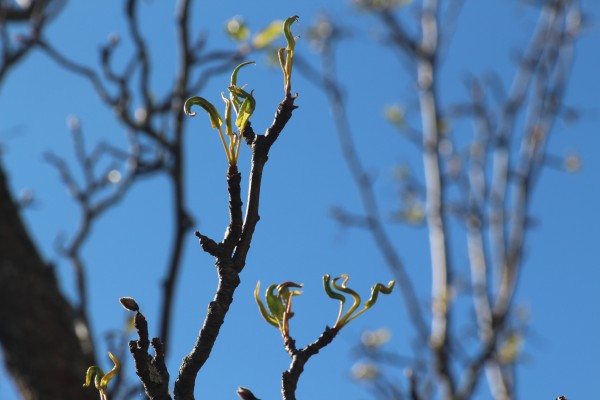

| Online: | |
| Visits: | |
| Stories: |

| Story Views | |
| Now: | |
| Last Hour: | |
| Last 24 Hours: | |
| Total: | |
Is Spring Getting Longer? Research Points to a Lengthening “Vernal Window”
“Historically, the transition into spring is comparatively shorter than other seasons,” said Alexandra Contosta, a research assistant professor at the University of New Hampshire’s Earth Systems Research Center. “You have snow melting and lots of water moving through aquatic systems, nutrients flushing through that water, soils warming up, and buds breaking on trees. Something striking happens after a very cold winter or when there’s been a lot of snow. Things seem to wake up all together, which is why spring seems to happen so quickly and can feel so dramatic.”
This type of changing timetable for spring may have potential ecological, social, and economic consequences that Contosta and her team are currently investigating. Agriculture, fisheries, and even outdoor recreation activities can be highly dependent on the timing of springtime climate conditions. A longer spring could mean a longer mud season requiring more road repairs and truck weight restrictions, a possible shift in the duration of the sugar maple season, or earlier lake thaw which might have implications with migratory birds. The ice melts earlier, but the birds may not have returned yet, causing a delay, or lengthening, in springtime ecological events.
New Hampshire EPSCoR’s Ecosystems & Society project team and co-authors include Alden Adolph and Mary Albert, Dartmouth College; Denise Burchsted, Keene State College; Mark Green, Plymouth State University; David Guerra, St. Anselm College; Elizabeth Burakowski, Jack Dibb, Mary Martin, William H. McDowell, Michael Routhier, Cameron Wake, Wilfred Wollheim, University of New Hampshire; and Rachel Whitaker, White Mountains Community College.
This research was supported by award EPS-1101245 from the National Science Foundation.
The University of New Hampshire is a flagship research university that inspires innovation and transforms lives in our state, nation and world. More than 16,000 students from all 50 states and 71 countries engage with an award-winning faculty in top ranked programs in business, engineering, law, liberal arts and the sciences across more than 200 programs of study. UNH’s research portfolio includes partnerships with NASA, NOAA, NSF and NIH, receiving more than $100 million in competitive external funding every year to further explore and define the frontiers of land, sea and space.
Source: http://www.ineffableisland.com/2017/03/is-spring-getting-longer-research.html





Just sharing a new site i found. Loving it so far. Refreshing actually.
https://www.conspiracyoutpost.com/